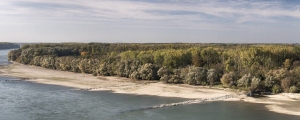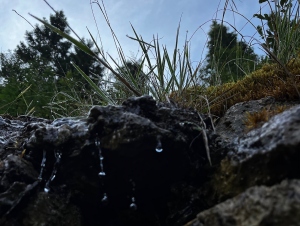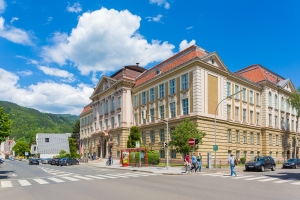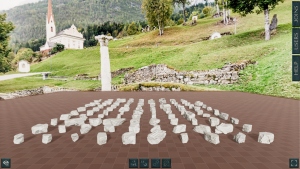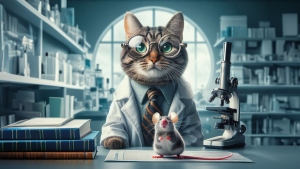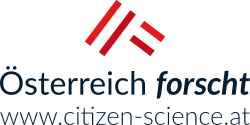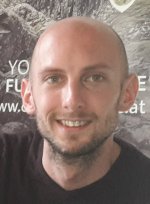
Florian Heigl
DANUBE4all
DANUBE4all is an EU project with the main task of developing a comprehensive action plan for the renaturation of river stretches in the Danube River Basin (DRB). To this end, a collaborative stakeholder process is being developed that actively incorporates the interests of citizens. The action plan is intended to contribute to the improvement of the ecological status, biodiversity and river connectivity of the Danube ecosystems and thus supports the EU mission OCEAN ‘Mission Healthy Oceans, Seas, Coastal and Inland Waters’.
The development and implementation of innovative and socially relevant nature-based solutions has a wide range of positive effects. In addition to the improved connectivity of rivers, possible scenarios for floodplains, reducing the risk of floods and droughts, and other socio-economically effective measures are an important focus. Renaturation projects on the Danube are being promoted with the goal of improving the continuity of sediments and positively influencing habitats/biota. These include the Danube National Park east of Vienna, a section of the river in Hungary and a measure on the Danube delta.
Nature-based solutions must be developed in collaboration with the affected population and supported by them in order to be effective in the long term. Renaturation processes tend to unfold slowly and require continuous attention and active support in order to be successful. Accordingly, the intensive involvement of citizens along the Danube is an important component that makes renaturation possible in the first place. A special work package supports interaction with citizens through the activation of citizen science. Citizen scientists are particularly involved in the development, implementation, evaluation and scaling of nature-based solutions, a citizen science method toolbox, and the development of communication measures.
In particular, DANUBE4all serves the following research fields:
- Criteria and indicators for physical connectivity status as a starting point for renaturation options in the Danube catchment. A reflection of existing assessment methods and initiatives contributes to this.
- Analysing the (ecological) status of water bodies and biodiversity with the aim of expanding the existing transnational biodiversity monitoring with a strong focus on restoration. This includes long-term trends in connection with management and conservation measures associated with renaturation.
- Co-creation, implementation and results monitoring of nature-based solutions implemented in the project in the Danube River Basin. This includes:
- 3 restoration interventions with the participation of local residents (3 Demonstration Sites);
- the further use and replication of solutions in 5 Associated Regions;
- later a multiplication of the approach by supporting 10 restoration measures (10 Synergy Sites).
- Implementation of socially relevant integrative measures with municipalities in the Danube River Basin. This includes measures that trigger social and economic change, as well as the sustainable, integrative and long-term management of restored ecosystems through public mobilisation and engagement. This is also to be achieved through citizen science.
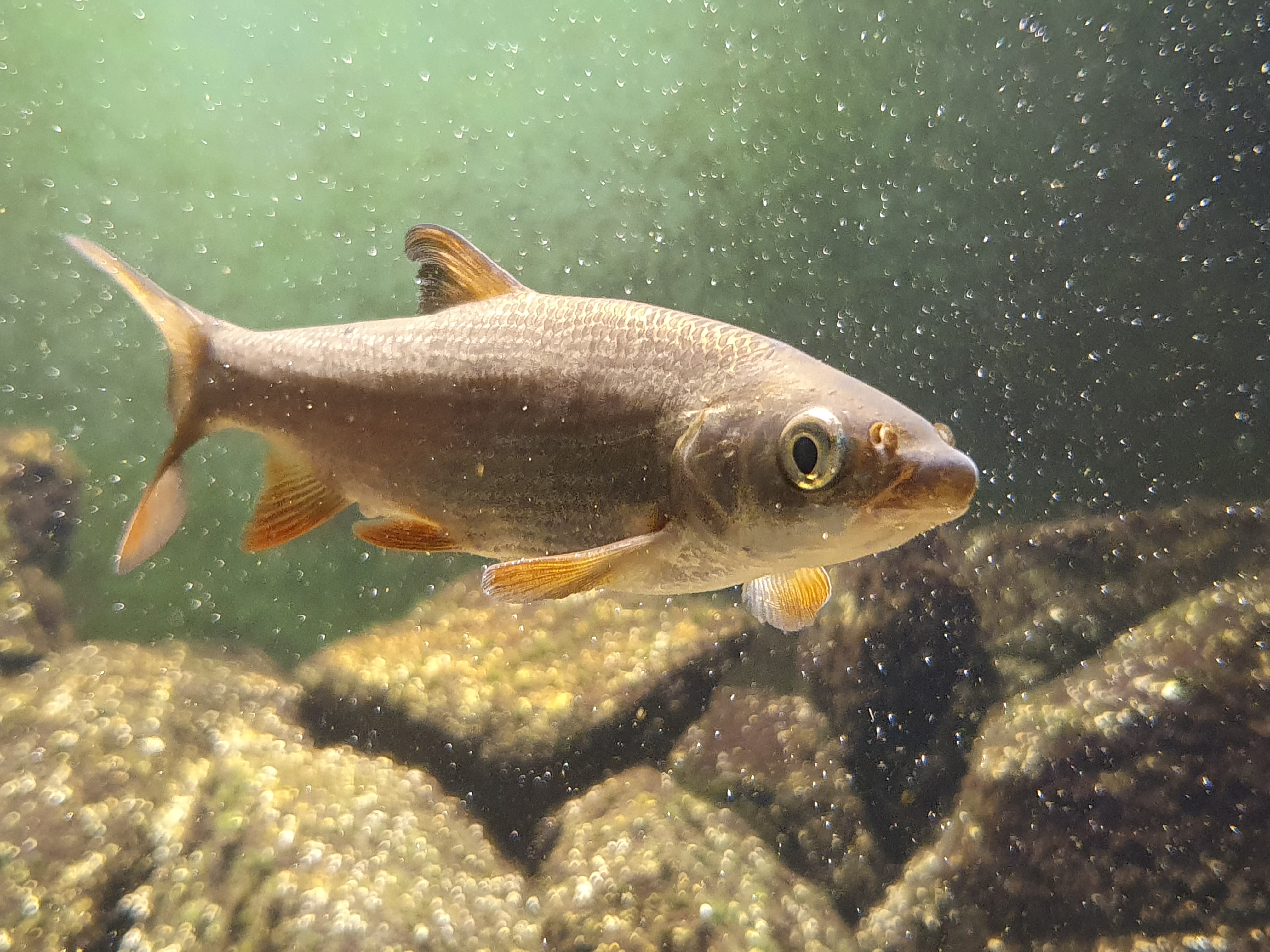
common nase, © Robert Togel (Images courtesy of viadonau)
This project fulfils version 1.1 of the quality criteria for citizen science projects on Österreich forscht.
On the trail of springs
Spring habitats in the Großes Walsertal Biosphere Reserve
In view of increasing extreme weather events, including periods of drought and consequent water shortages, the protection and knowledge of springs in the Großes Walsertal Biosphere Reserve is becoming increasingly important. In addition to their essential role in water supply, springs are often small but very important habitats for endangered organisms. The pressure to utilise and develop existing springs has increased significantly due to climate change. In order to raise awareness of these special habitats and obtain an overview of the existing spring habitats in the valley, the KLAR! Biosphärenpark Großes Walsertal is launching a citizen science project in cooperation with Life Science AG.
As an introduction, an online workshop will take place on 18 February 2025 from 19:00 to 20:30. Participants will gain exciting insights into the hidden world of springs, their ecological value for highly specialised species and the importance of certain organisms as indicators of water quality. They will also be shown how climate change and increasing utilisation pressure are affecting these sensitive habitats. Finally, the methodology of spring mapping will be presented and a typical mapping day outlined. After the workshop, interested parties will have the opportunity to secure a place on the field trip in summer 2025, during which the methodology will be applied in the field.
Life Science AG has already successfully carried out a citizen science project to record spring habitats in the Black Forest biosphere area and will now transfer this project to the conditions in the Großes Walsertal. The tried-and-tested mapping and evaluation method records not only the location but also characteristics such as spring size, temperature, cultural-historical significance, flora and fauna as well as potential human influences. As an alternative to the tried-and-tested analogue recording, the Qfield app is also being adapted so that walks in the Großes Walsertal can become small research trips.
As a model region for sustainable development, the biosphere reserve bears a special responsibility for the long-term protection of natural springs. We are committed to securing the supply of drinking water and at the same time protecting the habitat for rare species. At the same time, we must ensure that the springs are utilised in the most environmentally friendly way possible to provide water for humans and animals.
If you are interested, please register in advance with our Klar! manager - Lukas Ellensohn at This email address is being protected from spambots. You need JavaScript enabled to view it.. He will send you all further details and the link to the online workshop.
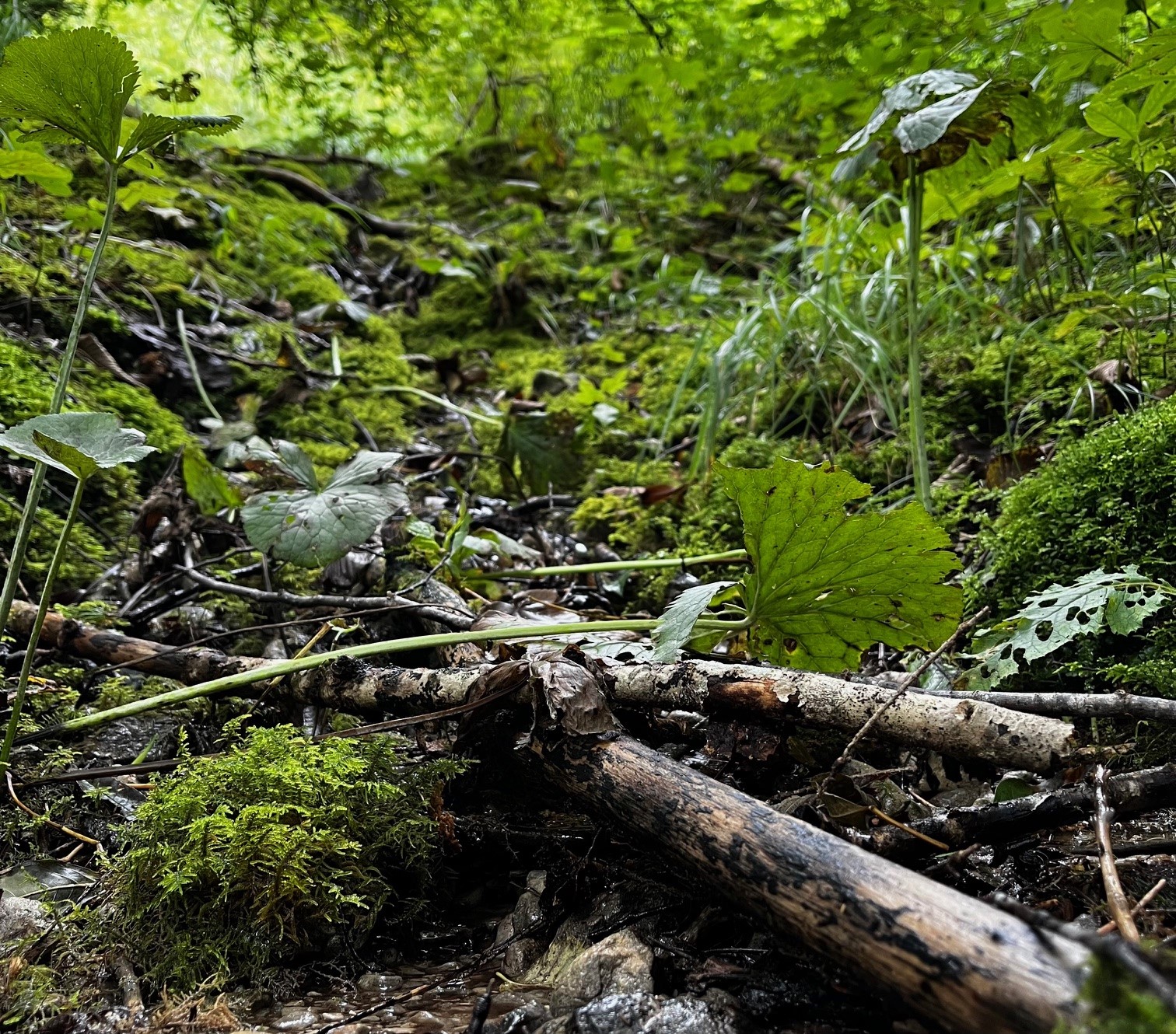
This project fulfils version 1.1 of the quality criteria for citizen science projects on Österreich forscht.
Museum Niederösterreich
Gain insights. Understand history. Experience nature.
In the impressive architecture of Hans Hollein, the Museum Niederösterreich in the cultural district of St. Pölten combines two places of encounter with science and research: the House of Nature and the House of History. Both houses offer continuously adapted and modernised main exhibitions as well as special exhibitions. The interactive, visually sophisticated exhibitions are accompanied by a comprehensive educational programme for all age groups.
The House of Nature at the Museum Niederösterreich in St. Pölten is a modern and lively place for people who are interested in nature and curious to learn more about the flora and fauna of Lower Austria on the one hand and are looking for relaxation and special experiences on the other. With the main exhibition, which focuses on the various habitat types of Lower Austria with over 40 live animal species in terrariums, aquariums and formicariums, the museum garden as a micro-universe of the province with a great variety of structures and plants, as well as annually changing special exhibitions, the House of Nature offers fascinating and exciting insights into Lower Austria's habitats and turns a visit into a real nature experience.
The aim is to impart knowledge about nature, arouse interest, open up new perspectives and address current issues of environmental protection and nature conservation, to which conferences, discussion and lecture series, events and educational activities as well as citizen science projects also contribute.
The House of Nature has been organising the City Nature Challenge (CNC), St. Pölten, in cooperation with St. Pölten City Council since 2021.
underwater world of garden ponds
The AmphiBiom project provides a very exciting insight into the variety of animal inhabitants that have already moved into garden owners' newly established ponds.
Take a look at our blog and dive into the fascinating underwater world of garden ponds.
Podcast: Mosquitoes
The new episode of our podcast "Wissen macht Leute" is online!
This edition is all about the Mosquito Alert project from AGES-Austrian Agency for Health and Food Safety GmbH, which makes it easy to report tiger mosquitoes and other mosquitoes using a free app.
Listen to the podcast in German: https://www.citizen-science.at/blog/radio-mosquito-alert
New project: Invasive plants in view
We are delighted to welcome a new project to Österreich forscht: "Invasive plants in view".
The citizen science project is dedicated to monitoring invasive alien plant species in the mountain regions of the Geopark Karawanken. Join in the research and report invasive plants if you are on holiday in this region or live there.
Invasive Plants in View
Monitoring in the Karawanken UNESCO Global Geopark
Together we can limit the spread of invasive species and protect the biodiversity of our mountain regions!
Project description
Our Citizen Science project is dedicated to the spread of Invasive Alien Species (IAS) in the Geopark Karawanken. Invasive species are plants or animals that are mostly introduced by human activity into regions where they do not originally occur, for example through intercontinental trade. While most introduced species are dependent on human support to survive, there is a minority that can adapt to the new environment and survive independently. Some of these species develop large populations very quickly and pose a significant threat to native ecosystems.
You can find a brief overview of our project in this video:
The problem
Invasive alien plants can spread rapidly because they produce large quantities of seeds, grow quickly and have few natural enemies in their new environment. This enables them to colonize new areas quickly and displace native species. They can also pose a direct threat to humans, for example through negative impacts on infrastructure or human health.
Mountain regions are currently less affected by invasive plants, but the risk is increasing due to climate change and human land use. The species are often introduced at lower altitudes and spread along corridors such as roads, hiking trails and watercourses to higher altitudes. Seeds and spores can stick to tires, shoes and tools (such as tractors) and spread in this way. Intentionally introduced material, such as for road construction, or planting material, such as seed mixtures for roadsides or ski slopes, also contribute to their spread.
With our project, the Geopark Karawanken aims to create a basis for planning targeted measures to limit the spread of invasive plants.
Examples of invasive plants and their characteristics:
-
 Canadian goldenrod (Solidago canadensis) CC-BY 2.0 Andreas Rockenstein (https://creativecommons.org/licenses/by/2.0/at/) Canadian goldenrod (Solidago canadensis) CC-BY 2.0 Andreas Rockenstein (https://creativecommons.org/licenses/by/2.0/at/)
Canadian goldenrod (Solidago canadensis) CC-BY 2.0 Andreas Rockenstein (https://creativecommons.org/licenses/by/2.0/at/) Canadian goldenrod (Solidago canadensis) CC-BY 2.0 Andreas Rockenstein (https://creativecommons.org/licenses/by/2.0/at/) -
 Giant hogweed (Heracleum mantegazzianum) CC BY-SA 4.0 Dietmar Rabich (https://creativecommons.org/licenses/by-sa/4.0) Giant hogweed (Heracleum mantegazzianum) CC BY-SA 4.0 Dietmar Rabich (https://creativecommons.org/licenses/by-sa/4.0)
Giant hogweed (Heracleum mantegazzianum) CC BY-SA 4.0 Dietmar Rabich (https://creativecommons.org/licenses/by-sa/4.0) Giant hogweed (Heracleum mantegazzianum) CC BY-SA 4.0 Dietmar Rabich (https://creativecommons.org/licenses/by-sa/4.0) -
 Himalayan balsam (Impatiens glandulifera) © Urosh Grabner Himalayan balsam (Impatiens glandulifera) © Urosh Grabner
Himalayan balsam (Impatiens glandulifera) © Urosh Grabner Himalayan balsam (Impatiens glandulifera) © Urosh Grabner -
 Japanese knotweed (Fallopia japonica) © Urosh Grabner Japanese knotweed (Fallopia japonica) © Urosh Grabner
Japanese knotweed (Fallopia japonica) © Urosh Grabner Japanese knotweed (Fallopia japonica) © Urosh Grabner
https://www.citizen-science.at/en/network/working-groups/wg-conference/author/934-florianheigl?start=30#sigProId75c9df7eb2
What can I do to support the project?
You can share locations of invasive plants with us via the iNaturalist platform and thus make a valuable contribution to protecting the native flora and fauna in the Karawanken Geopark area.
To help you get started, here is a step-by-step guide for Citizen Scientists:
Part I: What is iNaturalist and how can I use the platform (GER)
For Geopark schools and hiking guides:
Raise awareness of invasive plants in the Karawanken-Karavanke UNESCO Global Geopark and support us in documenting affected sites: During a hike or as part of a school excursion, you can document invasive plants in iNaturalist together with your group and educate participants about their problems and impacts on native ecosystems.
You can of course use all available documents (short video and step-by-step instructions) for your activity. If you need further support for the implementation, please contact us (This email address is being protected from spambots. You need JavaScript enabled to view it.).
Do you want to take action and stop the spread of invasive plant species?
If you want to do more, you can help us control the spread of plants:
Remove neophytes in your neighborhood
If you live nearby, you can clear an area in your neighborhood of neophytes in consultation with the landowner. There are different methods of removal depending on the plant in question. Balsam, for example, can be easily pulled out along with its roots. Remove the plants BEFORE the seeds ripen on a dry day. Canadian goldenrod can be pulled out by hand or with a spade when the soil is moist. Large populations can be reduced by regular mowing BEFORE the flowering period. Plant parts can be composted on site, roots, flowers or seeds can be transported away in bags and disposed of in residual waste to prevent the plant from spreading further.
Instructions for the removal of various invasive plants can be found in the practical guide Neophytes from the Swiss Agency for Environment & Communication.
Organize your own joint action to remove neophytes in the Karawanken Geopark
You can also organize a joint action to control the spread of neophytes in the Geopark - for example with your school class or as a hiking group. Clarify the action with the landowner of the area beforehand. The Geopark Karawanken team will support you with the planning.
We would be delighted if you kept us informed about your activities at This email address is being protected from spambots. You need JavaScript enabled to view it.
Thank you for your support and your valuable contribution!
ATTENTION Giant hogweed!!!
What should I do if I discover the giant hogweed in the Karawanken Geopark?
- Keep enough distance from the plant.
- Avoid skin contact and wash the affected areas immediately.
- Document the plant and its location (on iNaturalist).
- Inform other hikers and mark the location.
- Notify the municipality and/or the Geopark Karawanken team (This email address is being protected from spambots. You need JavaScript enabled to view it.)
- Monitor your skin for reactions and seek medical help if necessary.
- Please DO NOT remove the giant hogweed yourself without protective equipment!!!
Further details to the project
Project Area
The Karawanken UNESCO Global Geopark covers an area of 1,067 km² and includes five Slovenian and nine Austrian municipalities. This cross-border area is a unique natural and cultural experience region characterized by its outstanding geological heritage. The aim of the Geopark is to preserve the geological and natural resources as well as the cultural heritage of its members. By raising awareness, providing information, and education about the Geopark and its network at European and global levels, it contributes to strengthening its position as an important geopark. The Geopark also promotes economic use through sustainable tourism and supports cross-border cooperation for the sustainable development of the region.
Further information about the Karawanken Geopark can be found on the Geopark homepage and our social media channels (@visitgeoparkkarawanken).

Image 3: Overview map Karawanken UNESCO Global Geopark © Urosh Grabner
Project Goals
- Monitoring and Early Detection: Establishing a network to monitor invasive species in the Karawanken UNESCO Global Geopark in order to detect their spread at an early stage.
- Awareness-Raising and Education: Informing and involving the population about the importance and impact of invasive alien species and the influence of climate change and human activities on their spread.
- Data Collection and Analysis: Collecting and analyzing data on the occurrence and spread of invasive species by citizen scientists.
- Management and Control: Developing an action plan to control and contain invasive species in order to protect native ecosystems.
Methodology
- Participation: Involving the population as citizen scientists who collect data on the occurrence and spread of invasive species.
- Training and Workshops: Providing online educational materials and workshops to equip participants with the necessary knowledge and skills to identify and report invasive species.
- Online Green Academy
- Workshops
- Data Platform: Using the iNaturalist platform to record the locations of plant species. The collected data is validated there and then analyzed and published by the Carinthia University of Applied Sciences (UNESCO Chair for Sustainable Management of Protected Areas).
Expected Results:
- Improved Data Basis: Basic data collection on the occurrence and spread of invasive species in the Karawanken Geopark.
- Increased Awareness: Better-informed and engaged population actively contributing to monitoring and protecting native ecosystems.
- Effective Management Strategies: Action plan to control and contain invasive species in hard-to-reach areas.
Data Protection Information
No participant data is analyzed in this project. By joining, participants agree to iNaturalist's terms of use. Users control what data is visible to others when creating iNaturalist data, and settings can be managed in account details on the platform.
Project Details and Contact
This project is co-funded by the INTERREG Central Europe project HUMANITA - Human-Nature Interactions and Impacts of Tourism Activities on Protected Areas, supported by the Interreg CENTRAL EUROPE Program 2021-2027 with co-financing from the European Regional Development Fund (ERDF). The project's total budget is EUR 2,396,346.70, with EUR 1,917,077.36 funded by ERDF.
If you have any questions or require further information, please do not hesitate to contact us:
FH Kärnten: Lilia Schmalzl (This email address is being protected from spambots. You need JavaScript enabled to view it.)
Karawanken UNESCO Global Geopark: Urosh Grabner (This email address is being protected from spambots. You need JavaScript enabled to view it.)
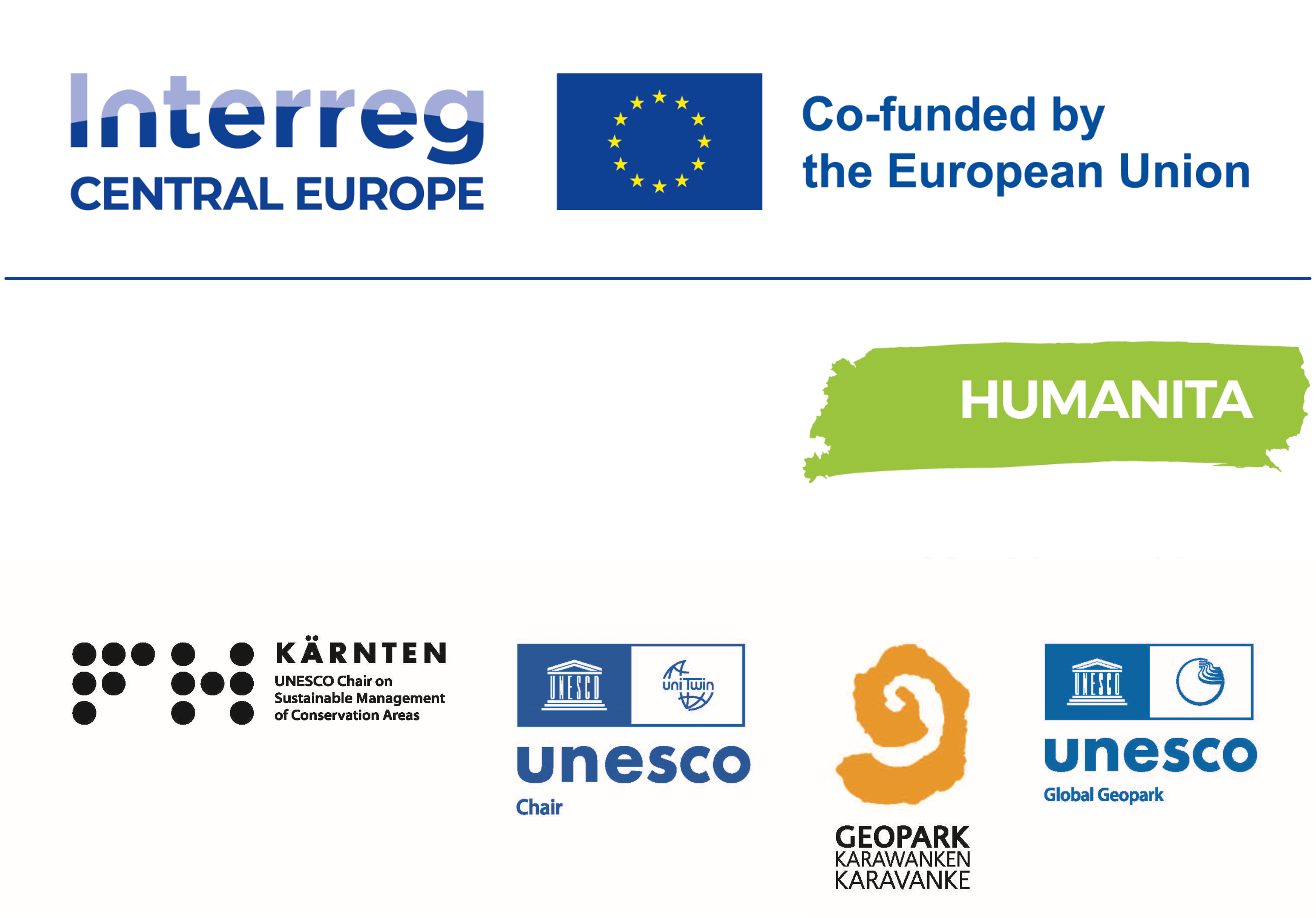
This project fulfils version 1.1 of the quality criteria for citizen science projects on Österreich forscht.
Montanuniversität Leoben
Since its foundation in 1840, Montanuniversität Leoben has developed its profile in several phases and today positions itself as a university for "Responsible and Circular Systems". Its expertise extends along the "circularity of systems" from raw material extraction to production processes, a wide range of products and recycling. This is reflected in the central areas of expertise of Advanced Resources, Sustainable Processes and Smart Materials. In these areas of expertise, Montanuniversität Leoben is almost the only university, also internationally, to have a closed knowledge base. In line with this, five core values determine research and teaching in 13 Bachelor's degree programs and 25 Master's degree programs: energy efficiency, climate neutrality, sustainability, zero waste and circular design.
Citizen Science is currently being pursued at Montanuniversität Leoben as part of two Sparkling Science projects in which Montanuniversität Leoben is collaborating with educational institutions from Tyrol and Lower Austria, among others. The focus is on solutions for the utilization of CO2 as well as on access to the topic of resource use in the sense of cultural sustainability research via fairy tales. Montanuniversität Leoben is also contributing chemical analyses of environmental samples and human remains to a project on Neolithic migration in Lower Austria and is working together with a secondary school in Lower Austria.
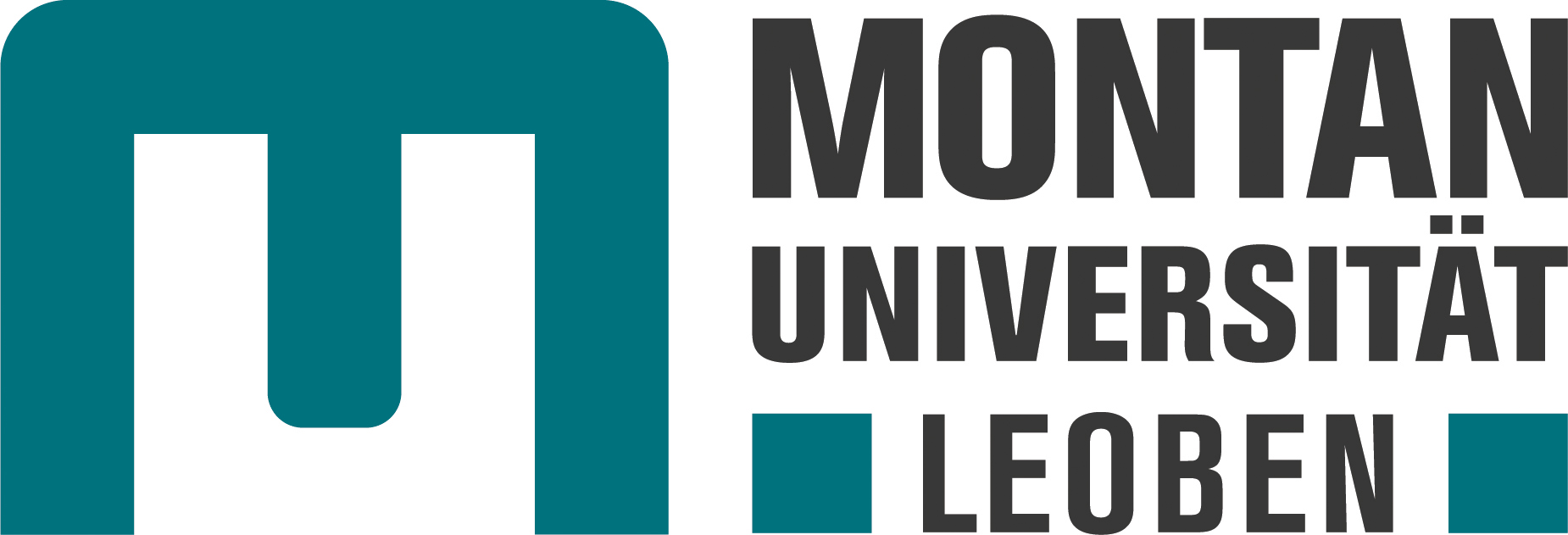
Open Reassembly
Many archaeological artifacts today are only preserved in fragments. Reassembling these parts into their original form is therefore an important but challenging task for archaeology.
Computer-assisted methods can facilitate this task or even partially solve it in some cases. However, due to the usually poor preservation of these artifacts and their potential incompleteness, reliable fully automatic reassembly is rarely possible in practice.
The goal of the Open Reassembly project is to design the solution to such complex tasks as a collaborative process involving many participants and in optimal interplay with computer-assisted methods.
Therefore, we invite Citizen Scientists to be part of this process and work together with other hobby archaeologists to solve these challenging puzzles. On this platform, puzzle experts can virtually reassemble the fragments of an ancient artifact together, evaluate the adjustments made by other participants, and thus earn points for good adjustments.
On their first visit, new users can create a new username in the "New Users" menu and start the puzzle. The system randomly assigns new users to one of several virtual puzzle rooms. Under "Existing Users," they can later continue where they left off.
Further information about the artifact, its archaeological background, and helpful tips for reassembly can be found under the "Artifact Details" menu.
Podcast episode
In Janurary 2025, team members Reinhold Preiner, Peter Houska and Stephan Karl gave insights into the project on the Österreich forscht podcast Wissen macht Leute - you can listen to the episode here (in German).
Gallery
-
 View on virtual stone fragments in Open Reassembly View on virtual stone fragments in Open Reassembly
View on virtual stone fragments in Open Reassembly View on virtual stone fragments in Open Reassembly -
 Detail view on some virtual stone fragments in Open Reassembly Detail view on some virtual stone fragments in Open Reassembly
Detail view on some virtual stone fragments in Open Reassembly Detail view on some virtual stone fragments in Open Reassembly
https://www.citizen-science.at/en/network/working-groups/wg-conference/author/934-florianheigl?start=30#sigProId999a219ed1
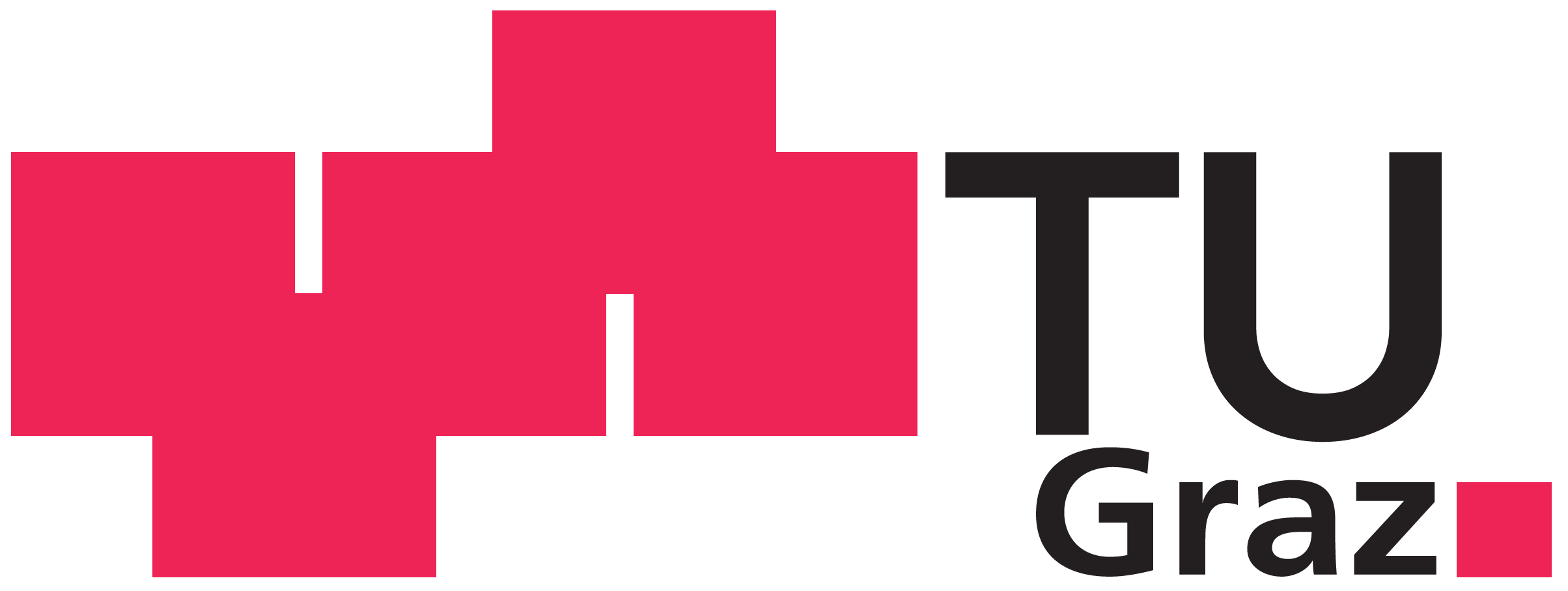
This project fulfils version 1.1 of the quality criteria for citizen science projects on Österreich forscht.
Show me your mouse, cat!
Your cat - our researcher
Attention cat owners in Vorarlberg! Under the motto "Show me your mouse, cat!", we are collecting dead mice and other small mammals that your cat brings to your home. From June to November 2024, you can hand in these "gifts" from your cat to us or other collection points in Vorarlberg. The aim of this campaign is to obtain as much data as possible on our native small mammals for the compilation of the Vorarlberg Red List of Small Mammals.
A project as part of the Vorarlberg Red List of Small Mammals
HOW DO I COLLECT A DEAD MOUSE?
Because dead animals can carry pathogens or parasites, the following principle applies: Do not touch a dead animal with your fingers!
Therefore, please proceed as follows:
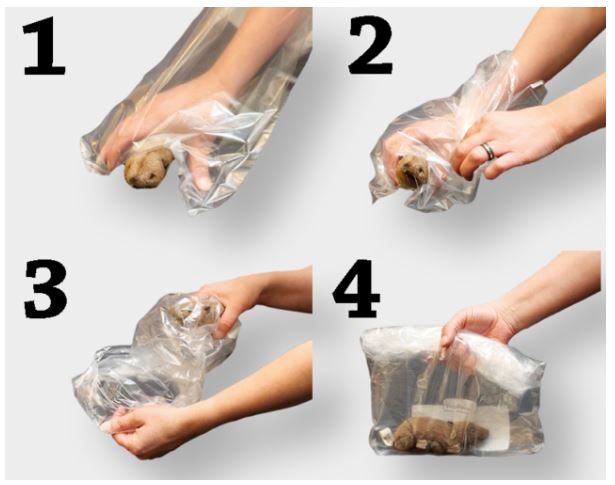
- Take a plastic bag (e.g. freezer bag) and put your hand in it.
- Grasp the dead mouse with your hand in the plastic bag.
- While holding the mouse with one hand, run your other hand along the edges of the bag over the mouse in your hand.
- Use a pencil to write down the following information about the find on a piece of paper: your name, address, telephone number, e-mail address, date or use the form for reporting (in German) a find. Only fully completed forms result in a scientific data record and can/may be recorded.
- Place the slip of paper in the plastic bag with the mouse.
- Seal the plastic bag tightly and in a space-saving manner (no air in the bag if possible)
- Place the plastic bag in the freezer.
- Take the plastic bag to inatura or one of the collection points at the next opportunity. Please do not allow it to thaw (cool bag/box with cool packs).
If you follow this simple method, you are on the safe side.
PLEASE DO NOT SEND THE DEAD ANIMALS BY POST! THE ANIMALS ARE THEN NOT SUFFICIENTLY COOLED AND DECOMPOSE VERY QUICKLY. PLEASE ONLY SEND ANIMALS WITH FUR (NO BIRDS, REPTILES ETC.)!
Small animals - little knowledge!
There are 29 species of small mammals in Vorarlberg. These include representatives of the dormice, birch mice, true mice, shrews, voles, hedgehogs and moles.
We do not know much about the distribution of small mammal species in Vorarlberg. The available data is poor. But it is precisely this data that we need in order to compile the Vorarlberg Red List of Small Mammals. And that's not so easy - because many of the small animals live very hidden lives and are difficult to find. And this is where your cat comes into play. Its hunting instinct makes it a predator - and therefore a co-researcher for us!
The cat in the service of science
Around 24,000 cats live in Vorarlberg (Statistics Austria 2019/2020).
A cat brings home 1/10 of its prey. However, these "gifts" are not usually met with joy by humans and so the small mammals are disposed of as quickly and inconspicuously as possible.
Unfortunately, it has to be said. Because these prey animals provide valuable information. As dead animals, they can be clearly identified to species. Information on sex, body mass and reproduction can also be obtained from the respective species.
You can find information about our small mammals in Vorarlberg at www.laendlemaus.at (in German).
What is close to our hearts!
So that we are not misunderstood - we are expressly not encouraging you to "send your cat hunting" more often (if that is even possible)! But we do think that if mice and other small mammals are already dying, then their deaths should still have a benefit for scientific research.
Free-roaming cats prey on small mammals, amphibians, reptiles and birds. You can find out how you as a cat owner can enjoy your cat and protect birdlife at the same time at www.birdlife.at.
What data is required?
Your name, address, telephone number, e-mail address, date found.
Please use the report form (in German) and fill it out in pencil.
Only with this information can your dead small mammal be used scientifically!
When can dead small mammals be handed in?
From June to November 2024, dead small mammals can be handed in at inatura and at the drop-off points.
Where are the drop-off points? You can find the list of drop-off points on the project website.
Further information on the "Show me your mouse, cat!" project can be found on the project website.
The project is being realised by the nature museum inatura Erlebnis Naturschau Dornbirn together with apodemus OG - Privates Institut für Wildtierbiologie.
Project duration: June - November 2024
Project management:
Dr. Christine Resch, Dr. Stefan Resch, apodemus OG - Privates Institut für Wildtierbiologie www.apodemus.at
Project organisation:
Dipl.–Biol. Anette Herburger, Teamleitung Forschung der inatura Erlebnis Naturschau GmbH

This project fulfils version 1.1 of the quality criteria for citizen science projects on Österreich forscht.

